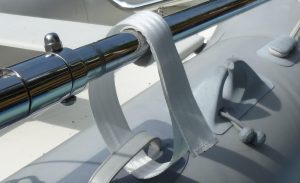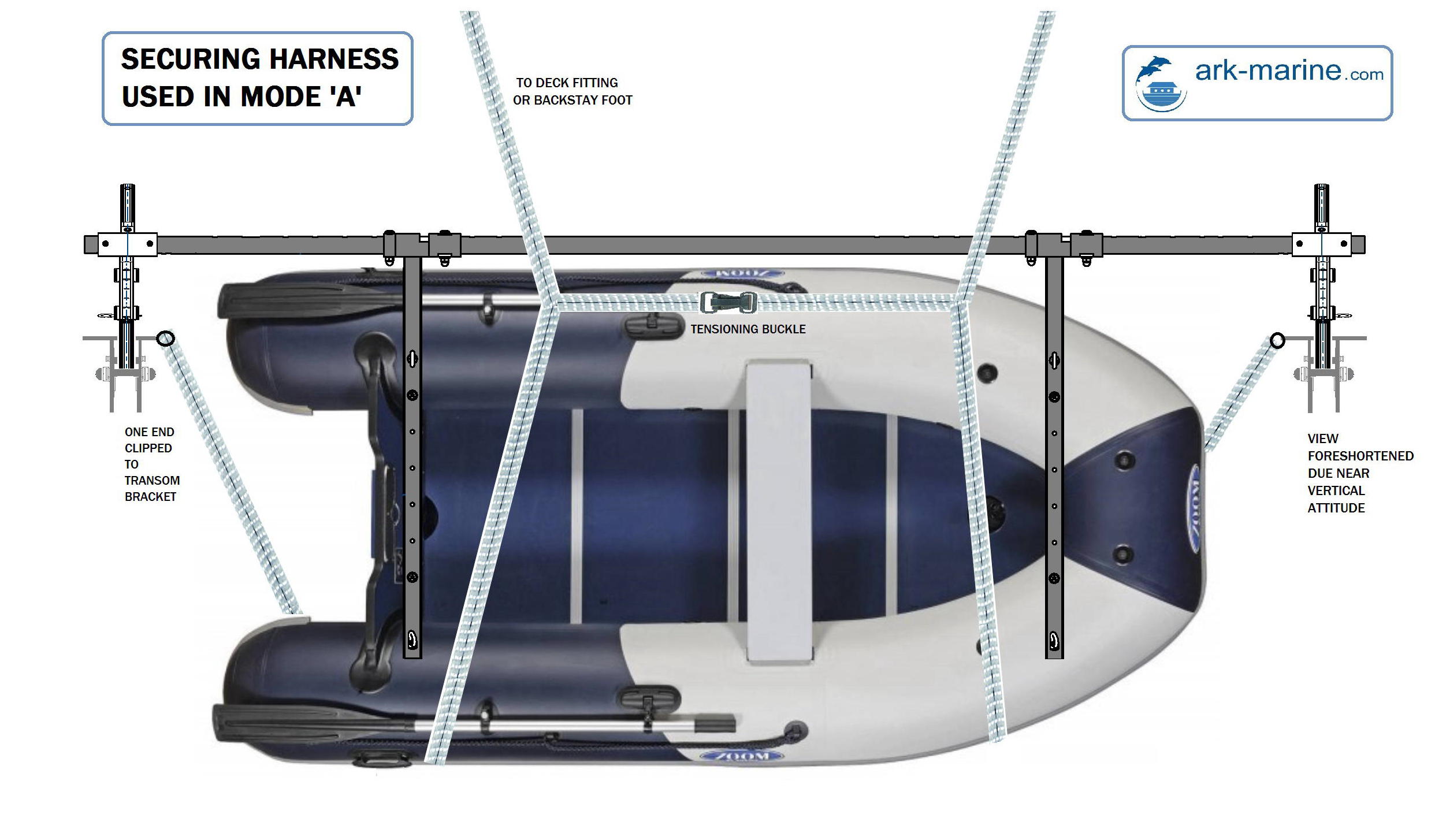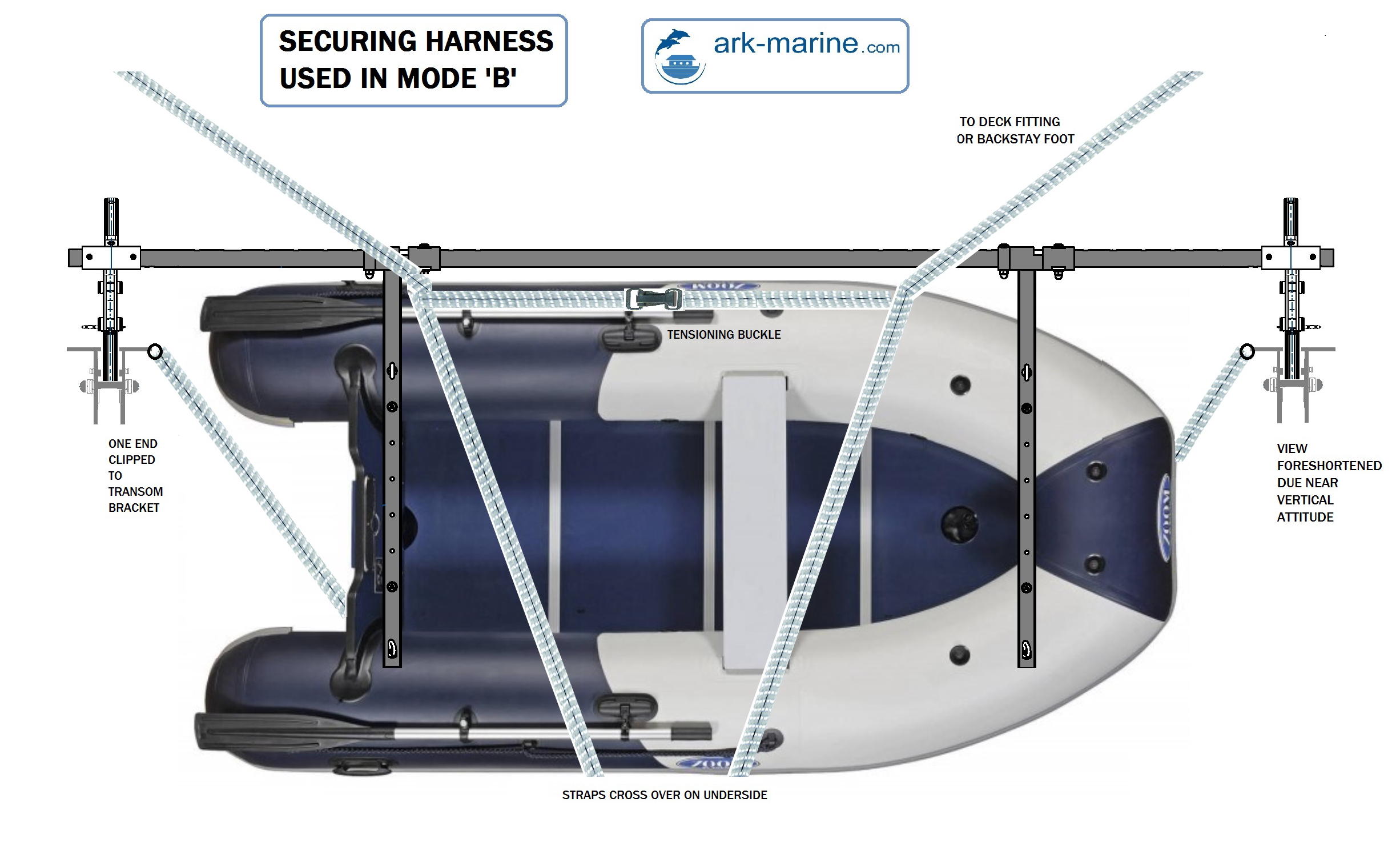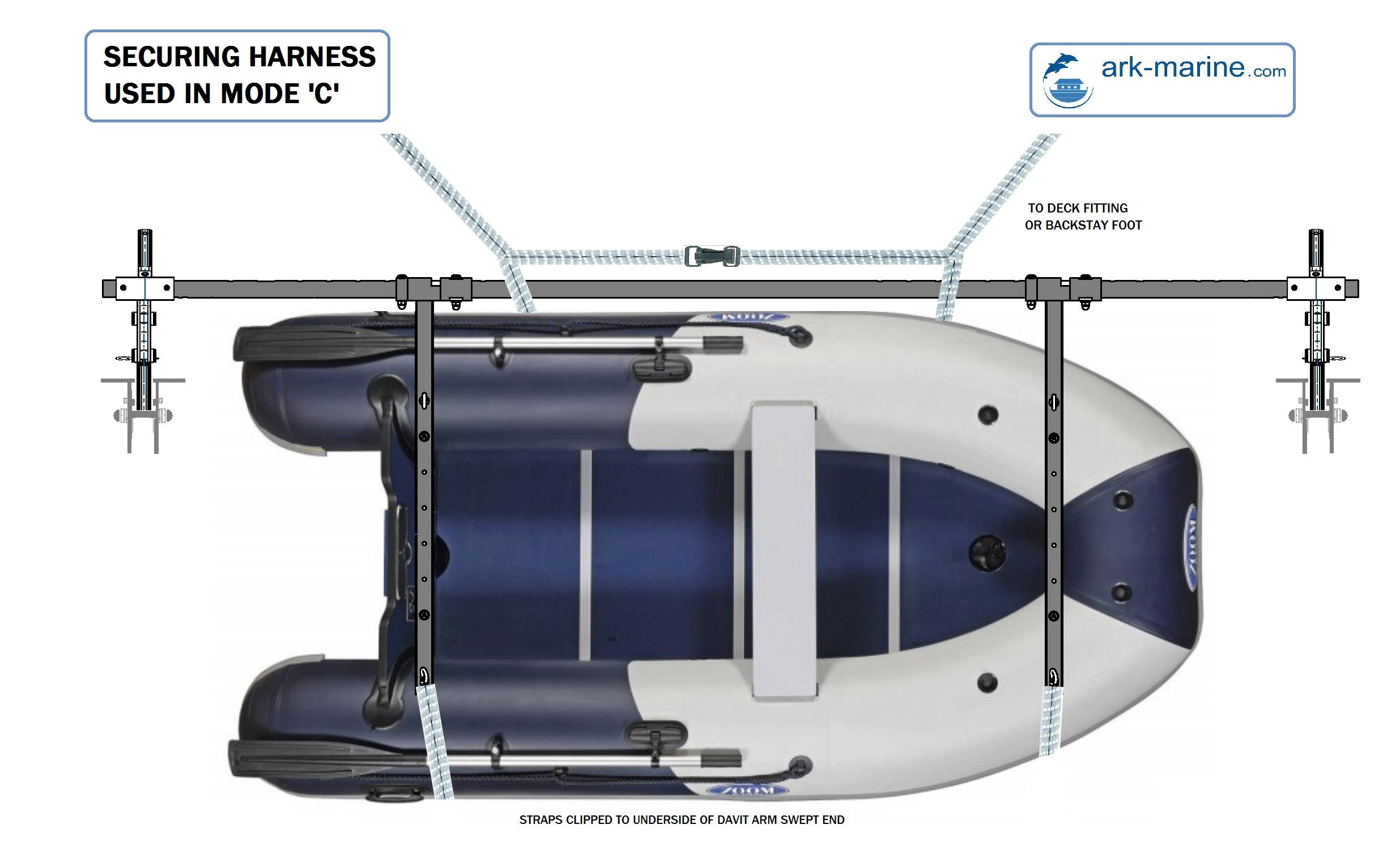There are 2 types of harness supplied as standard, and the user may even prefer to make their own to meet the nature of the yacht and dinghy. However the ARK products are designed to be as flexible as possible in utilisation and be able to be set up in many different ways.
Velcro straps
As in 1st photo: 2 supplied x Heavy duty white ultra violet resistant 50mm stiff woven polyester.
These wrap around the Transverse Link and hang loose with a tail. That tail may then separately be inserted through a carrying handle on the dinghy and wrapped a 2nd time around the Link to secure it. They aid stability during lifting and launching, and add a further protection against rolling in pitching seas.
When docking the dinghy on return to the yacht at anchor, the straps would be used to hold the dinghy during transfer and are adequate in quiet waters to leave the dinghy when not being used.

Webbing harness
As in the 3 figures: 1 set of 2 pieces, each of 15 metres long x 25 mm white tubular webbing, soft ultra-violet resistant polyester.
The 2 pieces differ in that one has a male buckle fitting at the tensioning point, the other has the female buckle.
The webbing when not used maybe stored in bags as typically used for sheets, hanging on a pushpit rail or on the Derrick Transverse Link. The 3 figures show a plan view (looking down) on the dinghy in the carriage position showing 3 main modes of fitting.
One end is clipped either to a hole provided on the Transom Bracket or to an eyebolt on the underside at the end of the Davit Arm.
The other end which feeds to the yacht may be clipped directly to an eye or wrapped around an item and clipped back on itself. Hence it could be terminated on either:
- A backstay lower chain plate
- Any part of the pushpit structure
- Any deck mounted U bolt already fitted (i.e. for jack stay lines)
- A special U bolt or eye bracket or eyebolt fitted for this purpose
- A suitable member of a bimini support structure
The set up will incorporate the basic requirement that in an emergency abandon ship routine, the tensioning buckle close to the yacht can be undone with a single hand, and the 2 sides of the harness quickly flung off the ends of the dinghy.
Preventing movement of dinghy at sea
How the Harness is deployed will depend on the structure of the yacht. There are 3 pictures here to illustrate possible modes.
Modes A and B: Here the dinghy is pulled forward to restrict movement in every plane. The length of the dinghy versus the separation of the Track Arms influences the best solution because it affects how close the dinghy comes to the pushpit. These are a few variants.
|
Yachts with extensive aft facing pushpit structure |
The Harness pulls the dinghy forward towards the pushpit. The user can fit white rubber buffers or drop fenders aft of the rails or rely on the dinghy’s rubber buffer rim. |
|
High aspect fold down transoms |
Carry the dinghy pulled against the upper transom, and fit a rubber buffer to the facia or use fenders. |
|
Yacht with only limited aft facing pushpit structure |
The issue will be if there are safety lines to clip across the gap. Adjust these to be tight and then have the Harness wrapped over the lines to form part of a tensioned web. |
|
Yachts with close fitted twin fixed backstays |
A protective shroud can be fitted over the backstay wire and the dinghy drawn tight against them. |
|
Yacht fulfils none of the above |
The dinghy is pulled upwards against the Davit Arm as in Mode C. |
|
There will be further variants on the above mix which the user may find preferable in their own circumstances. Either way the Harness has movable buckles, tensioners, D-rings and clips which can be positioned to meet most anticipated criteria. |
|


